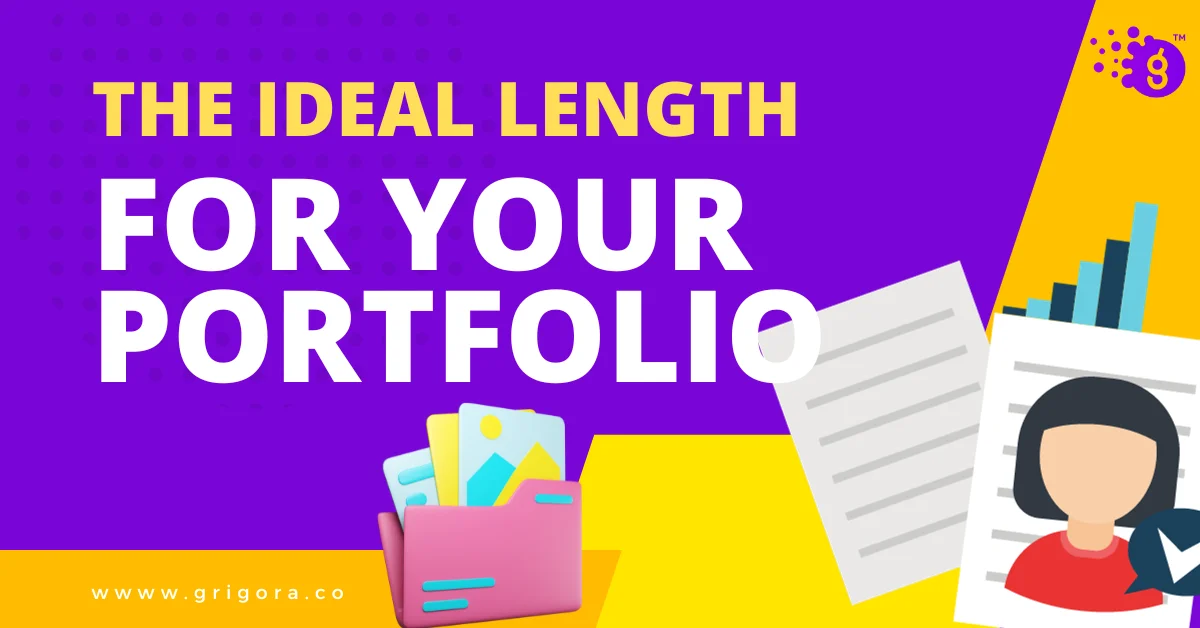Introduction
In the dynamic world we live in, showcasing your work effectively has never been more crucial. Whether you are a freelancer, a student, or a seasoned professional, a well-crafted portfolio can be your ticket to new opportunities and heights in your career.
Understanding the Purpose of a Portfolio
A portfolio serves as a visual and tangible representation of your skills, achievements, and experiences. It is a curated collection that showcases your best work, demonstrating both your abilities and your potential. It is not just a repository of your past works but a testament to your evolving skill set and a glimpse into your future potential.
"A portfolio does not only showcase your achievements but narrates the journey of your professional growth."
The Significance of Portfolio Length
Determining the ideal length of a portfolio can be a challenging task. It is a delicate balance between providing enough material to showcase your skills adequately and avoiding an overload of information that might overwhelm the viewer. The length should be dictated by the quality and relevance of the work included, rather than a fixed number of pages.
Determining the Ideal Number of Pages
When it comes to deciding the number of pages your portfolio should have, it is essential to focus on the quality of the content rather than the quantity. Here we delve into various factors that can help you determine the ideal number of pages for your portfolio.
While there isn't a one-size-fits-all answer, maintaining a portfolio with 8-10 pages can be a good start. It is essential to prioritize quality over quantity, showcasing only your best work to make a strong impression.
Industry Standards
Different industries have different expectations when it comes to portfolio length. For instance:
Designers and Artists: Generally prefer a portfolio of around 15-20 pages showcasing a variety of works.
Writers and Content Creators: Might opt for 10-15 pages that include various writing samples.
Architects and Engineers: Often go for a detailed portfolio that can span up to 20-30 pages, including blueprints and project descriptions.
Quality Over Quantity
It is always better to showcase fewer works of high quality than to fill your portfolio with mediocre content. Ensure that each piece in your portfolio reflects your best work and demonstrates your skills effectively.
Relevance to the Job/Role
Tailor your portfolio to suit the specific role or job you are applying for. Include works that are most relevant to the position, even if it means having a shorter portfolio.
Ease of Navigation
Ensure that your portfolio is easy to navigate, with a clear and logical layout. It should be structured in a way that guides the viewer through your works seamlessly, without feeling cluttered or overwhelming.
Breaking Down the Portfolio
1. Cover Page
Creating a Striking Cover
The first impression is often the last; hence, creating a striking cover is pivotal. Your cover page should encapsulate the essence of your work and personality. It should be visually appealing, with a harmonious blend of colors, fonts, and graphics that resonate with your style. Consider adding a personal logo or a professional photo to give it a personal touch.
What to Include on the Cover
On the cover page, include essential details such as your name, profession, and contact information. You might also add a tagline that succinctly describes what you do. Ensure that the cover remains uncluttered, maintaining a balance between design and information.
2. Introduction
Personal Statement
Following the cover page, the next section should be a personal statement where you introduce yourself and narrate your journey, your passion for the field, and what drives you. This section should be heartfelt and authentic, giving readers an insight into your personality and professional journey.
Resume or CV
Include a concise resume or CV that outlines your educational background and work experience. Highlight significant achievements and skills, ensuring it aligns with the kind of work showcased in the portfolio.
3. Project Showcase
Number of Projects to Include
When it comes to showcasing your projects, quality should always take precedence over quantity. It is advisable to include 5-7 of your best works that comprehensively demonstrate your skill set and experience. However, this number can vary depending on the depth and complexity of each project.
Detailing Each Project
For each project, provide a detailed breakdown including the project’s name, the role you played, the tools used, and the problem it aimed to solve. Incorporate visuals such as images or videos to give a vivid depiction of the project. Including a brief case study for significant projects can add value, offering a deeper insight into your working process and the solutions you devised.
4. Case Studies
In-depth Analysis of Select Projects
Case studies serve as a deep dive into select projects, allowing you to showcase your analytical and problem-solving skills. Detail the challenges faced, the strategies employed, and the results achieved, providing a comprehensive view of your capabilities.
What Makes a Good Case Study
A good case study is structured, detailed, and showcases both your thought process and the final outcome. Include metrics to quantify the success of the project, and visuals to break the monotony and enhance understanding.
5. Testimonials and References
Gathering Testimonials
Testimonials play a pivotal role in building trust with potential employers or clients. Reach out to previous employers, clients, or colleagues to gather testimonials. Ensure to include a variety of testimonials that highlight different strengths and achievements.
How to Present References
When presenting references, maintain a consistent format that includes the name of the referee, their position, and a contact method, be it an email address or a phone number. Always ask for permission before listing someone as a reference. Accompany the references with a short description of your relationship with the person and the project or role you worked on together.
6. Conclusion
Summarizing Your Skills and Experience
In the conclusion section of your portfolio, summarize your key skills and experiences. This is your final chance to impress potential employers or clients, so make it count. Highlight your unique selling points and what sets you apart from others in your field.
A Call to Action for Potential Employers or Clients
End your portfolio with a strong call to action (CTA) encouraging potential employers or clients to get in touch with you. Provide your contact details and possibly a link to your LinkedIn profile or resume for further details.
Additional Sections to Consider
Publications or Press
If you have been featured in any publications or press releases, this is the section where you should highlight it. Provide links to the publications or upload scanned copies of the press releases to add credibility to your portfolio.
Awards and Recognitions
Showcasing any awards and recognitions you have received over the years can be a great addition to your portfolio. Detail each award with the name, the organization that awarded it, and the reason you were awarded, to give potential employers or clients a sense of your accomplishments.
Certifications and Courses
In this section, list down all the relevant certifications and courses you have completed that add value to your profile. Mention the institution or organization that issued the certification and the date of completion to provide a comprehensive view of your educational background.
Grigora’s Portfolio Building Features
Easy Portfolio Setup with Grigora
Building a portfolio with Grigora is a hassle-free process. The platform offers a range of tools and features that make it easy for users to set up their portfolios without any technical know-how. From selecting a domain to choosing a template, Grigora guides you at every step, ensuring a smooth setup process.
Templates and Designs Available on Grigora
Grigora offers a variety of templates and designs that cater to different professions and industries. Whether you are a graphic designer, a writer, or a photographer, you will find a template that suits your style and showcases your work in the best light. Moreover, the templates are customizable, allowing you to add a personal touch to your portfolio.
Conclusion
Finding Your Unique Portfolio Length
Determining the ideal length for your portfolio is a nuanced process. It involves a careful consideration of your industry standards, the depth of your experience, and the kind of projects you wish to showcase. Remember, the goal is to present a well-rounded view of your skills and achievements without overwhelming the viewer. It's about finding that perfect balance between quantity and quality.
Adapting the Portfolio Over Time
A portfolio is not a static entity; it is a dynamic representation of your evolving skill set and experiences. As you grow in your career, your portfolio should adapt and evolve accordingly. Regular updates, incorporating feedback, and adding new accomplishments will keep your portfolio fresh and relevant. It is a tool that grows with you, helping you to showcase the best version of yourself at every stage of your career.
FAQs
How often should I update my portfolio?
It is advisable to update your portfolio regularly, ideally every 3-6 months. Regular updates allow you to add new projects, remove outdated content, and ensure that your portfolio reflects your current skill set and expertise.
Can I include collaborative projects in my portfolio?
Absolutely, including collaborative projects showcases your ability to work well in a team and brings a diverse range of works into your portfolio. However, be sure to clearly indicate your specific role and contributions in each project.
What is the role of a digital portfolio on platforms like Grigora?
Digital portfolios on platforms like Grigora serve as a dynamic space where you can showcase your work in a structured and visually appealing manner. It allows for easy updates and offers features that can enhance the presentation of your work, helping you to stand out in the competitive market.
How can I showcase my portfolio effectively on Grigora?
To effectively showcase your portfolio on Grigora, make use of the various templates and customization options available. Ensure that your portfolio is organized, with a clear structure that guides viewers through your work seamlessly. Incorporating multimedia elements and interactive features can also elevate the user experience.
Additional Resources
To further assist you in creating a remarkable portfolio, here are some resources that you might find beneficial:
Books on Creating a Stellar Portfolio
"Building a Portfolio for Creative Professionals" – Offers insights into creating a portfolio that stands out.
"The Portfolio Book: A Guide for Photographers, Artists, and Designers" – A comprehensive guide to building a portfolio tailored for various creative fields.
Websites for Portfolio Inspiration
Behance – A platform where creatives from around the world share their portfolios, providing a rich source of inspiration.
Dribbble – A community for designers showcasing a wide array of portfolios, offering a glimpse into different styles and approaches.
Remember, building a portfolio is a continuous process, and it should evolve with your skills and experiences. Utilize the resources available to create a portfolio that not only showcases your work but tells your unique story.



